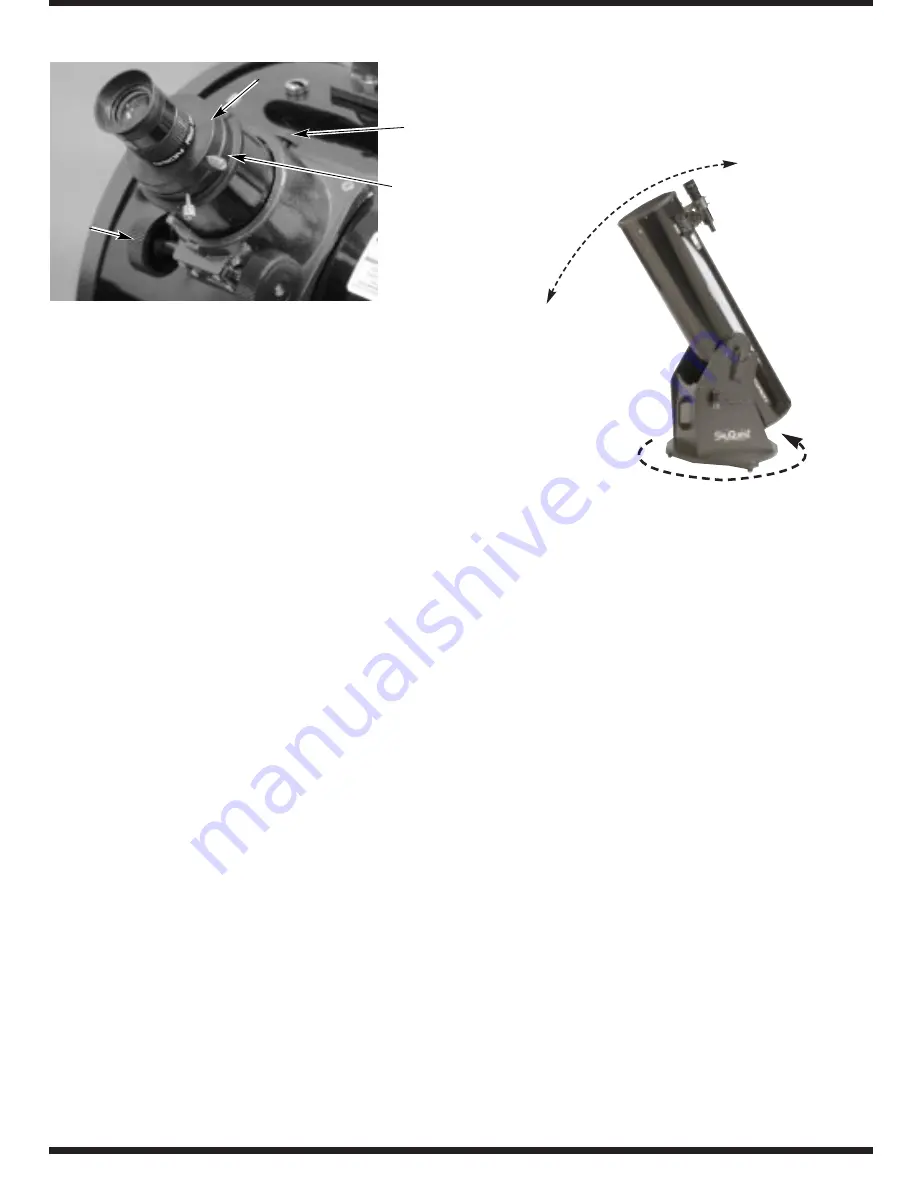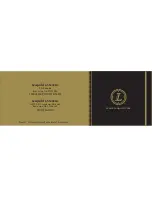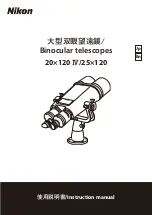
7
The assembly of your SkyQuest Dobsonian is now complete.
It should appear as shown in Figure 1. The dust cap on the
front of the telescope tube should always remain in place
when the telescope is not in use. It is also a good idea to store
eyepieces in an eyepiece case and to replace the cover caps
on the focuser and finder scope when the telescope is idle.
3. Using Your Telescope
It is best to get a feel for the basic functions of the
SkyQuest XT10 Dobsonian during the day, before observ-
ing astronomical objects at night. This way you will not
have to fumble around trying to orient yourself in the dark!
Find a spot outdoors where you have plenty of room to
move around the telescope, and where you have a clear
view of some object or vista that is at least 1/4-mile away.
It is not critical that the base be exactly level, but it should
be placed on somewhat flat ground or pavement to ensure
smooth movement of the telescope.
Remember, never point the telescope at or near the Sun with-
out using a proper solar filter over the front aperture!
Altitude and Azimuth
The Dobsonian base of the SkyQuest XT10 permits
motion of the telescope along two axes: altitude (up/down)
and azimuth (left/right) (see Figure 10). This is very con-
venient, since up/down and left/right are the most “natural”
ways that people aim. As a result, pointing the telescope is
exceptionally easy.
Simply take hold of the telescope tube and move it left or
right so the base rotates about its central azimuth bolt, and
move it up or down so the altitude side bearings rotate in
the base’s cradle. Both motions can be made simultane-
ously and in a continuous manner for easy aiming. Move
the telescope gently - let it glide. In this way you can point
the telescope to any position in the night sky, from horizon
to horizon.
When moving the telescope, it may be convenient to grasp
the front end of the telescope tube so that your fingers just
protrude into it; this provides a convenient “handle”.
Focusing the Telescope
Insert the low power 25mm eyepiece into the focuser and
secure it with the thumb screw on the 1.25" adapter. Move
the telescope so the front (open) end is pointing in the
general direction of an object at least 1/4-mile away. Now,
with your fingers, slowly rotate one of the focusing knobs
until the object comes into sharp focus. Go a little bit
beyond sharp focus until the image just starts to blur
again, then reverse the rotation of the knob, just to make
sure you’ve hit the exact focus point.
If you have trouble focusing, rotate the focusing knob so
the drawtube is in as far as it will go. Now look through the
eyepiece while slowly rotating the focusing knob in the
opposite direction. You should soon see the point at which
focus is reached.
The black nylon thumb screw on the top of the body of the
focuser (see Figure 9) is to lock the focuser drawtube in place
once the telescope is properly focused. Before refocusing,
remember to first loosen this thumb screw.
Viewing with Eyeglasses
If you wear eyeglasses, you may be able to keep them on
while you observe, if your eyepieces have enough eye relief
to allow you to see the whole field of view. You can try this by
looking through the eyepiece first with your glasses on and
then with them off, and see if the glasses restrict the view to
only a portion of the full field. If they do, you can easily
Altitude
Azimuth
Figure 10. The SkyQuest has two axes of motion: altitude
(up/down) and azimuth (left/right).
Figure 9: The large format focuser with eyepiece adapters
attached. The focuser will accept eyepieces with barrel
diameters of both 1.25" and 2".
Focus
knob
2"
eyepiece
adapter
Focus
lock
thumb
screw
1.25" eyepiece adapter

























